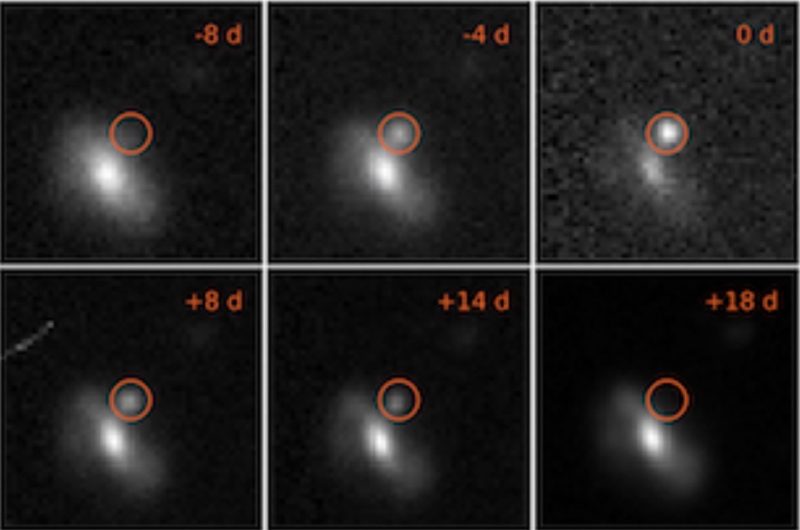
A team of astronomers reported last week that they noticed 72 very bright, but quick Fast-Evolving Luminous Transients (FELTs) in a recent survey. Why don’t they just call them supernovae? It’s because, while these events resemble supernovae in their ability to outshine an entire galaxy of stars, they fade away much faster than supernovae, on a timescale of days instead of weeks. Miika Pursiainen of the University of Southampton presented the group’s results on April 3, 2018, at the European Week of Astronomy and Space Science in Liverpool, U.K.
Pursiainen and his collaborators say they’ve found the largest number of these quick events to date. They found them in data from the Dark Energy Survey Supernova Program (DES-SN), observing from Cerro Tololo in the Chilean Andes. The events appear to be hot, with temperatures from 18,000 to more than 50,000 degrees Fahrenheit (10,000 to 30,000 degrees Celsius). And, whatever they are, they are large. The observed objects range in size from at least several times the distance between our Earth and sun, up to 100 times that distance (Earth is 93 million miles, or 150 million km, from the sun). The astronomers also said these events:
… seem to be expanding and cooling as they evolve in time, as would be expected from an exploding event such as a supernova.
The Southampton astronomers aren’t the only ones studying FELTs, and in late March other astronomers working with Kepler spacecraft data concluded that a FELT is:
… a new kind of supernova that gets a brief turbo boost in brightness from its surroundings.
In their statement, though, the Southampton astronomers didn’t sound as conclusive as that, saying there is:
… still debate on the origin of these transients. One possible scenario is that the star sheds a lot of material before a supernova explosion, and in extreme cases could be completely enveloped by a shroud of matter. The supernova itself may then heat the surrounding material to very high temperatures. In this case astronomers see the hot cloud rather than the exploding star itself. To confirm any of this, the team will need a lot more data.
Pursiainen also commented:
The DES-SN survey [in which the 72 FELTs were found] is there to help us understand dark energy, itself entirely unexplained. That survey then also reveals many more unexplained transients than seen before. If nothing else, our work confirms that astrophysics and cosmology are still sciences with a lot of unanswered questions!

Bottom line: Astronomers report on 72 bright, quick events found in a recent survey. They’re like supernovae, but flash into view, then disappear again much faster.











